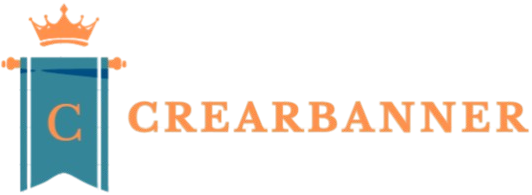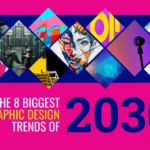How to Design a Billboard: Key Tips for Maximum Impact
When it comes to outdoor advertising, a billboard remain one of the most powerful tools to reach a large audience that needs proper design. However, designing an effective billboard is both an art and a science. The challenge lies in capturing attention within seconds while delivering a clear and memorable message. Whether you’re promoting a product, service, or event, this guide will help you create a billboard that stands out and resonates with your target audience.
1. Keep the Message Simple
Drivers and pedestrians only have a few seconds to glance at your billboard, so the message needs to be concise and memorable. Ideally, your text should not exceed seven words. Think of it as a headline: short, snappy, and impactful.
- Example: “Grab a Coffee on Your Way Home” or “Best Pizza in Town – Order Now!”
2. Use Large, Readable Fonts
Visibility is crucial in billboard design. The text should be large enough to be read from a distance, and the font should be clear and bold. Sans-serif fonts like Arial, Helvetica, or Impact are excellent choices for outdoor advertising because they are easy to read even at a glance.
- Tip: The font size should be at least 1 foot tall for every 10 feet of viewing distance. For a billboard meant to be seen from 100 feet away, your font should be at least 10 feet tall.
3. Eye-Catching Imagery
A striking image can say more than words. Use high-quality, relevant images that support your message and grab attention. The image should not overwhelm the text but rather complement it, creating a harmonious design. Avoid using multiple images, as this can clutter the space.
- Example: If you’re advertising a vacation spot, a beautiful landscape of the destination can be the central image, with a simple call to action like “Book Your Dream Getaway.”
How to Design a Billboard
4. Bold Colors for Contrast
Colors play a vital role in billboard design. Use bold, high-contrast colors that make the text and images stand out. Black, white, red, yellow, and blue are commonly used because they are attention-grabbing and easy to read from a distance.
- Pro Tip: Avoid colors that blend into the environment where your billboard is placed. If it’s near greenery, stay away from greens and instead use brighter tones like yellow or orange.
5. Focus on Branding
Your logo, company name, and brand colors are key elements to include in your design. While the logo doesn’t need to dominate the space, it should be easily recognizable. Make sure your billboard design is consistent with your overall branding to strengthen brand recognition.

- Example: Coca-Cola often uses its signature red and white branding on billboards, ensuring instant brand recall.
Design and Play
While CrearBanner helps you create stunning visuals, sometimes you need a break from design. When you’re ready to unwind, consider exploring online entertainment. If you’re looking for a fun diversion, you might enjoy trying kingjohnnie casino online. Remember to balance your creative endeavors with responsible entertainment.
6. Add a Clear Call to Action (CTA)
A billboard’s CTA should be simple and easy to remember. Whether you want viewers to visit your website, call a number, or stop by your store, make the CTA direct and prominent.
- Example: “Call Now: 555-1234” or “Visit BestPizza.com.”
7. Location Matters
The location of your billboard should influence your design choices. If it’s placed on a highway, viewers will have less time to absorb information, so keep the message short and highly visual. If it’s in a city where people might walk by, you can afford to include slightly more detail.
- Highway Tip: Keep your design minimal with only the most essential information.
- Urban Tip: Use slightly more text since pedestrians may have more time to look at your billboard.
Enhancing Engagement with Interactive Visuals
Creating compelling banners is more than just good design—it’s about driving user interaction. One strategy to increase click-through rates is incorporating gamified elements or promotional tie-ins. For example, integrating themes related to real money pokies can attract a wider audience for entertainment-based campaigns. These dynamic visuals can turn static ads into engaging content that converts.
8. Test for Readability
Before finalizing the design, ensure that everything is legible from a distance. Print out a small version of the billboard, stick it on a wall, and step back to see if the text and image are clear. This can help you catch any design flaws that might make the billboard hard to read from afar.
9. Use White Space Wisely
Don’t be afraid of empty space. Cluttered billboards are hard to read and often fail to leave an impression. Use white space (or empty space) to separate the elements of your design, making the text and image pop. This also gives the viewer’s eyes a place to rest, making it easier to absorb your message.
10. Incorporate Humor or Emotion (If Appropriate)
If it fits your brand, incorporating humor or an emotional appeal can make your billboard more memorable. People are more likely to engage with and remember a message that made them laugh or feel something.
- Example: A pet adoption agency might use a cute animal image with a heartwarming message like, “Need a Best Friend? Adopt Today.”
\
Final Thoughts
Designing an effective billboard requires a balance of creativity, clarity, and strategic thinking. By keeping your message short, using bold visuals and colors, and ensuring your design is readable from a distance, you can create a billboard that grabs attention and drives results. Remember, the goal is to make a lasting impression in just a few seconds—so make those seconds count!



buy cheap enclomiphene cost per tablet
canada pharmacies enclomiphene
how to order enclomiphene cheap prices
kamagra l'australie a besoin d'une ordonnance
acheter kamagra france prix
est-il illégal de commander kamagra en ligne
cheap androxal usa seller
online order androxal purchase discount
buy androxal online germany
order flexeril cyclobenzaprine generic online uk
how to order flexeril cyclobenzaprine cost usa
purchase flexeril cyclobenzaprine generic now
discount gabapentin cost at walmart
online order gabapentin price in us
online order gabapentin purchase in the uk
buying dutasteride uk meds
how buy dutasteride in australia
online order dutasteride price on prescription
online order fildena cheap discount
cheapest buy fildena generic discount
discount fildena uk online
buying itraconazole generic new zealand
buy itraconazole online itraconazole
ordering itraconazole cheap in uk
discount staxyn usa where to buy
online order staxyn cheap now
buying staxyn generic uae
ordering avodart australia suppliers
buy avodart using mastercard
cheapest buy avodart canadian sales
cheapest buy rifaximin generic compare
cheap rifaximin price australia
buying rifaximin canada mail order
purchase xifaxan without prescriptions canada
purchase xifaxan generic from india
xifaxan pharmacy online uk
comprar kamagra generika
kamagra doručeno přes noc
kamagra žádná předpisová kanada